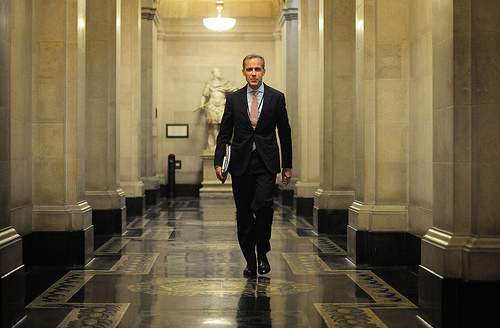Credit Cards & Loans
BoE holds base rate and QE for 54th consecutive month

The Bank of England has elected to hold the base rate at 0.5% and maintain the size of its quantitative easing programme at £375bn for the 54th consecutive month.
The Bank’s Monetary Policy Committee (MPC) was expected to leave the overnight rate at this historic low, where it has remained since 2009, following assurances from senior figures at the central Bank in recent weeks.
BoE deputy governor Charlie Bean last week said the Bank has sent a “clear signal” that interest rates will remain unchanged in the immediate future.
Under its policy of ‘forward guidance’, the Bank last month forecast it would leave the base rate at 0.5% until late 2016 when it expects the unemployment rate will have fallen to 7%.
In his first public speech since taking over as governor of the Bank of England in July, Mark Carney (pictured) said last week that the Bank will reassess its interest rate policy after the unemployment rate has fallen by 0.8%, provided there are no material threats to either price or financial stability.
He said: “First, we are giving confidence that interest rates won’t go up until jobs, incomes and spending are recovering at a sustainable pace. In particular, we will have to see the rate of unemployment, currently 7.8%, fall at least to a threshold of 7% before even beginning to consider whether to raise Bank Rate.”
Carney emphasised that the 7% target marks a “staging post” to reassess rates rather than representing an automatic trigger. The strength of the recovery and the outlook for inflation will both be deciding factors on whether to raise rates when unemployment reaches this point.
The MPC’s current forecast is for growth to average around 2.5% per year over the next three years, just below the historical average rate of 2.75%.
Over the next three years, the MPC expects productivity to grow at around 1.8% per year, below pre-crisis levels of 2.2%. This projection implies productivity will not reach pre-crisis levels until 2015 at the earliest.
Carney said he had “tremendous sympathy” for savers, who have felt the brunt of low interest rates, but that they would feel the benefits in the long term from a stronger economy.
The interest rates on 70% of loans to households and more than 50% of loans to businesses are linked to Bank’s base rate.